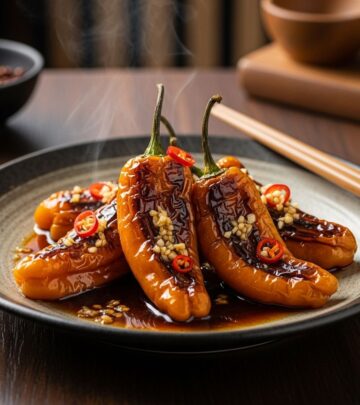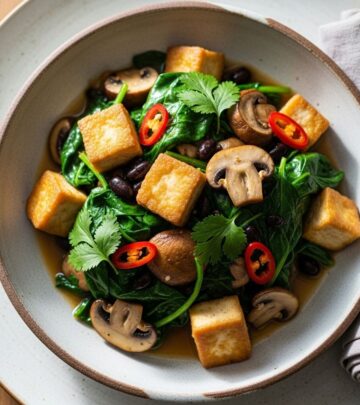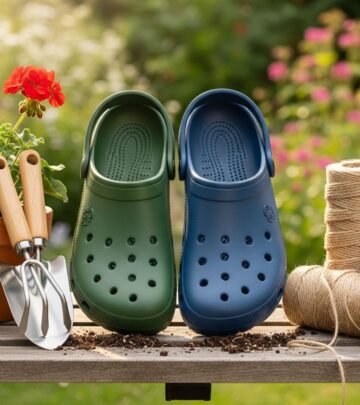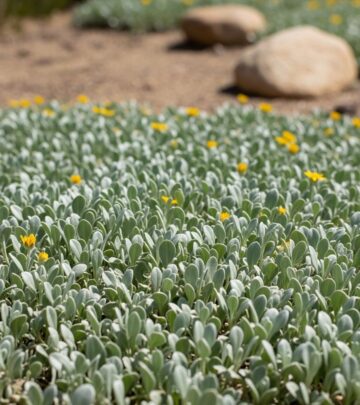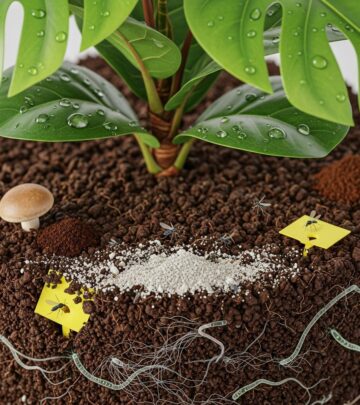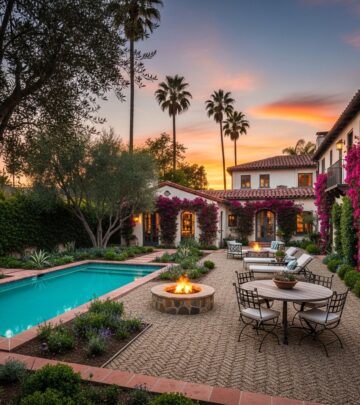Types Of Flowers: 301 Varieties To Brighten Your Garden
Uncover 301 stunning flower varieties—from classics to rare beauties—to create a vibrant, fragrant, and unforgettable garden.
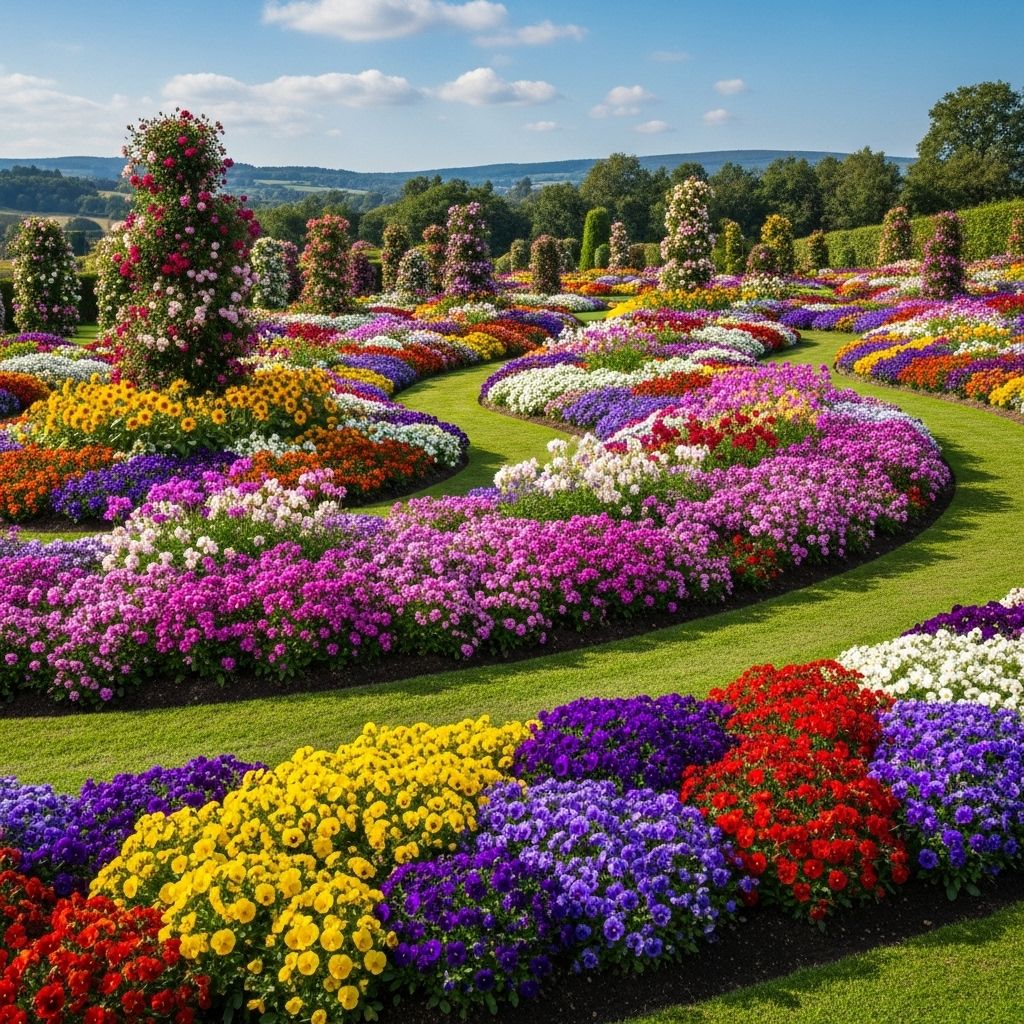
Image: HearthJunction Design Team
301 Different Types of Flowers: The Ultimate Gardener’s Guide
Flowers provide vibrant color, intoxicating fragrances, and key support for pollinators. With thousands of blooms to choose from, selecting the right flowers for your garden can be both exciting and overwhelming. This comprehensive guide explores 301 different types of flowers—from classic favorites to unique showstoppers—helping you discover blooms that suit your taste, climate, and gardening needs. Whether you’re cultivating a romantic rose-covered arbor, a cheerful wildflower meadow, or fragrant borders, you’ll find inspiration here.
Table of Contents
- Popular Flower Types by Category
- Perennial Favorites
- Annual Blooms for Every Season
- Unique and Unusual Flowers
- Flowering Trees and Shrubs
- Flowering Vines and Climbers
- Arrangement and Design Ideas
- Frequently Asked Questions
Popular Flower Types by Category
Start your floral journey by exploring popular flowers, each with unique characteristics. These are cherished worldwide for their beauty, versatility, and varied uses.
Classic Garden Favorites
- Roses (Rosa): Universally adored for their elegant blooms and rich scents. From compact miniatures to climbing roses reaching up to 12 feet, roses come in nearly every color.
Popular climbing rose varieties: ‘A Shropshire Lad’, ‘Buff Beauty’, ‘Cecile Brunner’, and ‘New Dawn’. - Tulips (Tulipa): Spring icons available in a rainbow of hues and forms. Perfect for mass planting in beds and borders.
- Lilies (Lilium): Regal, trumpet-shaped flowers with dramatic colors and spots. Prized for their beauty and strong fragrance.
- Sunflowers (Helianthus annuus): Towering annuals with large golden heads, cheerful faces, and edible seeds.
- Daisies (Bellis perennis, Leucanthemum): Simple, classic blooms with a cheerful yellow center and white petals, also available in pink and red varieties.
Colorful Annuals for Quick Impact
- Petunias: Known for continuous, abundant summer blooms in a variety of colors. Fragrant varieties are especially valued.
- Cosmos (Cosmos bipinnatus): Easy-growing annuals, daisy-like flowers in pinks, whites, and deep reds. Ideal for beds or containers.
Height: 60cm–2.5m - Marigolds (Tagetes): Bright, low-maintenance annuals with orange and yellow pom-pom flowers. Repel insect pests.
- Zinnias (Zinnia elegans): Compact, sun-loving plants with large, vibrant blooms that attract butterflies.
Perennial Favorites
Perennials come back every year, providing reliable color and structure to your garden. Many perennials also improve with age—producing more abundant blooms over time.
- Black-Eyed Susan (Rudbeckia hirta): Cheerful golden daisies with dark centers. Bloom from midsummer into fall.
- Peonies (Paeonia): Luxurious, highly fragrant blooms in spring and early summer. Available in pink, white, red, and yellow.
- Coneflowers (Echinacea): Sturdy daisy-shaped flowers in purple, pink, and white. Loved by pollinators and easy to grow.
- Hostas: Grown for their lush, shade-loving foliage and delicate summer flowers.
- Daylilies (Hemerocallis): Low-maintenance, trumpet-shaped flowers in diverse colors. Each bloom lasts just a day, but plants produce many buds for a long season.
Annual Blooms for Every Season
Annual flowers complete their lifecycle in a single year. They’re ideal for quick bursts of color and can be used to refresh your garden design each season.
- Cockscomb (Celosia cristata): Unusual, velvety flower heads resembling a rooster’s comb. Available in red, yellow, pink, orange, and white. Self-seeds for color year after year.
- Four o’Clock Flower (Mirabilis jalapa): Bushy perennials often grown as annuals, with trumpet-shaped blooms that open in late afternoon and stay open until morning. Available in bright reds and pinks.
- Snapdragon (Antirrhinum majus): Spikes of colorful, dragon-shaped blooms. Excellent for borders and flower beds.
- Alyssum (Lobularia maritima): Low-growing annuals with dense clusters of white or purple flowers and sweet fragrance. Perfect for borders or containers.
Unique and Unusual Flowers
Some flowers stand out for their striking shapes, vibrant colors, or rare blooming habits. These add personality and intrigue to any landscape.
- Common Evening Primrose (Oenothera biennis): Showy, bowl-shaped yellow flowers that open in the evening and close by morning. Entire plant is edible and lemon-scented. Attracts moths at night and bees in the morning. Foliage forms low semi-evergreen mounds.
- Protea (Protea cynaroides): Exotic, large flower heads with a prehistoric look. Native to South Africa, perfect for dramatic gardens.
- Bat Flower (Tacca chantrieri): Striking black or dark purple flowers with bat-like shape and long whiskers. Requires tropical or greenhouse conditions.
- Bleeding Heart (Lamprocapnos spectabilis): Graceful, heart-shaped pink and white flowers dangling from arching stems.
Flowering Trees and Shrubs
Add vertical interest and season-long structure to your garden with flowering trees and shrubs. Many are suitable for small or large landscapes.
| Tree/Shrub | Flowering Season | Notable Features |
|---|---|---|
| Magnolia | Early spring (March) or summer (some varieties) | Star or goblet-shaped pink/white blooms; suitable for small gardens (e.g., Magnolia stellata) or large trees (Magnolia grandiflora up to 15m) |
| Cherry Blossom (Prunus serrulata) | Spring | Clouds of pastel pink or white blooms before leaves emerge; iconic in Japanese and North American gardens |
| Hydrangea | Summer to autumn | Large globe- or cone-shaped flower clusters in white, blue, pink, or purple |
| Forsythia | Early spring | Bright yellow, bell-shaped flowers on bare branches, signaling spring’s arrival |
Flowering Vines and Climbers
Climbing and trailing flowering plants add vertical drama, soften hard structures, and create romantic garden scenes.
- Climbing Roses: Elegant roses that scale arbors, trellises, and fences for a cottage garden feel. Most varieties rebloom from summer through fall and offer a delightful aroma. Can reach heights of 12 feet or more.
Classic cultivars: ‘A Shropshire Lad’, ‘Buff Beauty’, ‘Cecile Brunner’, ‘New Dawn’. - Clematis: Vigorous climbers producing starry or bell-shaped flowers in nearly every color.
- Wisteria: Cascading clusters of lavender or white flowers with a sweet scent, often seen draping over pergolas and archways.
- Morning Glory (Ipomoea): Fast-growing vines with trumpet-shaped blooms that open in the morning and close by afternoon.
Flower Arrangement and Design Ideas
Mixing and matching flower types creates dynamic, textured, and season-long displays. Here are some tips for designing your own floral paradise:
- Layer heights and bloom times: Combine tall perennials (like hollyhocks or delphiniums) with lower-growing annuals (like alyssum or marigolds).
- Choose a color palette: Limit your choices to 2–3 main colors for a cohesive look, or create bold contrast with complementary hues.
- Blending fragrance and form: Pair highly scented blooms (roses, lilacs, evening primrose) with visually dramatic varieties (sunflowers, cockscomb).
- Wildlife gardening: Include nectar-rich flowers (echinacea, cosmos, zinnia) to attract bees, butterflies, and songbirds.
- Succession planting: Mix early spring bulbs (tulips, daffodils), summer perennials (peonies, daylilies), and fall showstoppers (asters, sedums) for year-round interest.
Frequently Asked Questions (FAQs)
What are the main types of flowers based on life cycle?
Annuals complete their life cycle in one season. Biennials take two years—foliage forms the first year, then flowers and dies the second. Perennials return for several years, with some growing more robust over time.
How do I choose which flowers to plant in my garden?
Consider sun exposure, soil conditions, local climate, and your desired color palette. Also, think about bloom time—choose a mix of spring, summer, and fall flowers for continuous color. Select plants based on their mature size and spacing requirements.
Are there flowers suited for pollinators?
Yes! Many open or daisy-shaped flowers (like echinacea, cosmos, zinnia, and black-eyed Susan) are excellent for attracting pollinators. Night-blooming flowers (like evening primrose and four o’clock flower) attract moths and night-flying insects.
Which flowers are easiest to grow for beginners?
Annuals such as marigolds, zinnias, cosmos, and sunflowers are very easy to grow from seed. Perennials like black-eyed Susan, coreopsis, and yarrow also require minimal care once established.
How can I extend my garden’s blooming season?
Select a mix of bulbs, annuals, perennials, and shrubs with staggered flowering times. Deadheading spent flowers and fertilizing wisely can also encourage repeat blooms.
Conclusion
Whether you prefer bold sunflowers, delicate primroses, elegant climbing roses, or unique exotics like cockscomb and bat flower, there’s a world of blossoms waiting for you. With a thoughtful selection of flower types—annuals, perennials, climbers, and more—you can create a garden that’s vibrant, fragrant, and alive with color in every season. Start exploring the possibilities, and turn your outdoor space into a blooming masterpiece.
References
- https://www.epicgardening.com/types-of-flowers/
- https://www.epicgardening.com/gardening/ornamental/flowers/
- https://shop.epicgardening.com/collections/plant-now-bloom-in-spring
- https://shop.epicgardening.com/collections/flower-seeds
- https://www.gardenersworld.com/plants/different-types-of-flowers-to-grow/
Read full bio of Shinta

